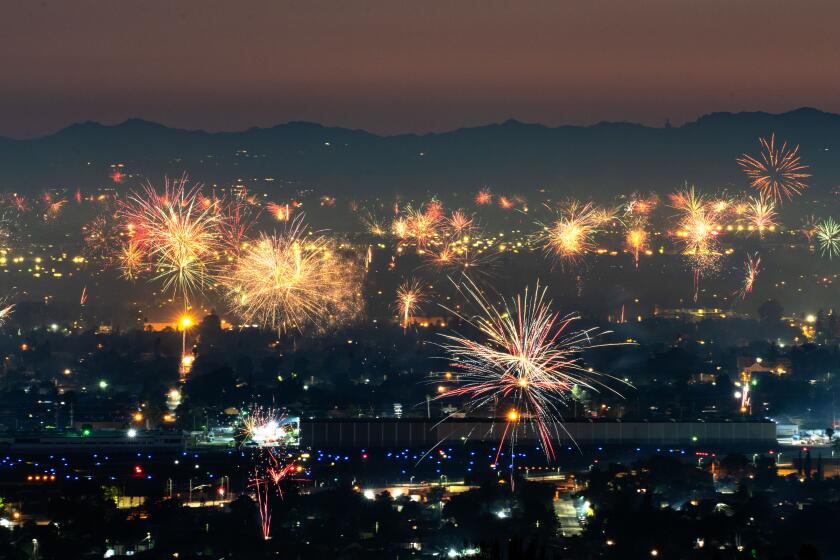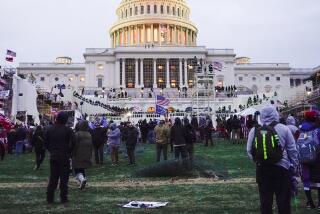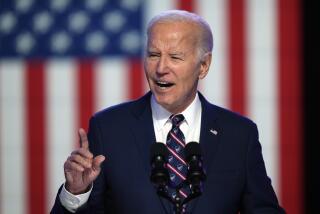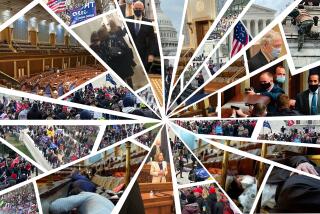Closed U.S. Capitol is somber backdrop this July 4
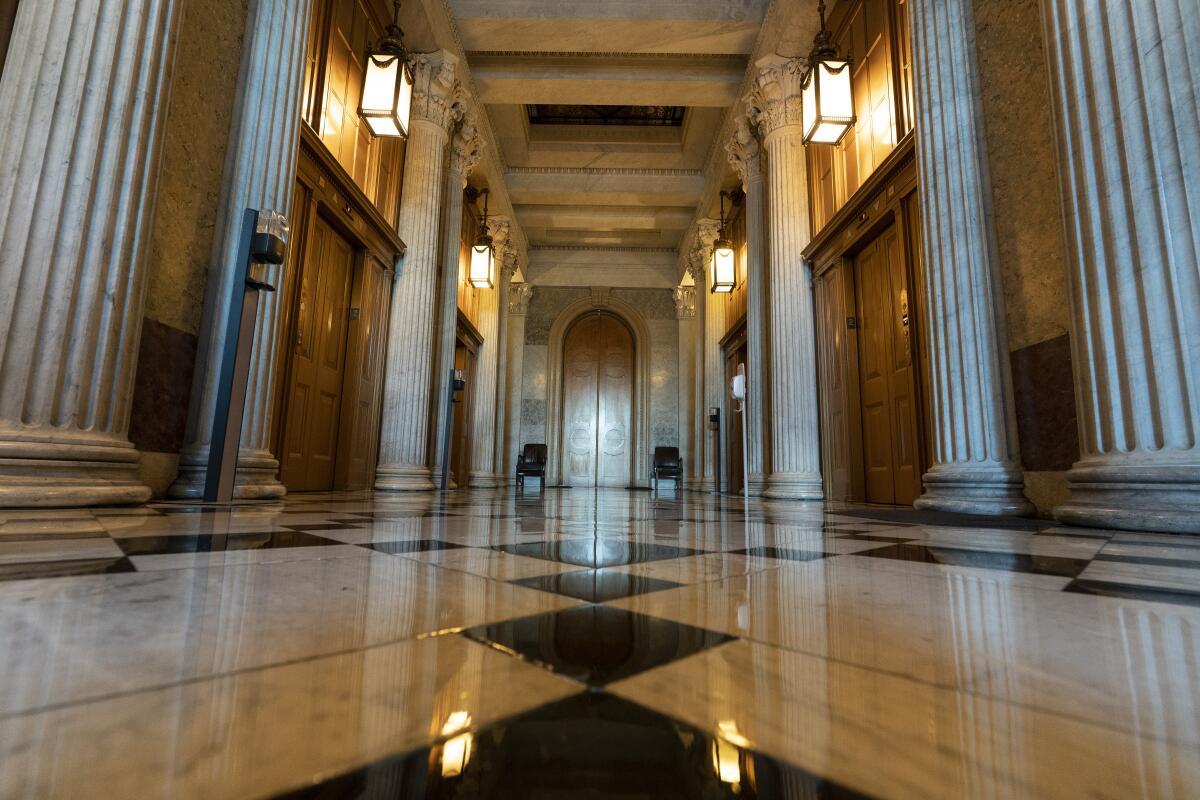
WASHINGTON â As it has been for nearly 16 months, longer than any time in the nationâs history, the U.S. Capitol is closed to most public visitors.
The one-two punch of the COVID-19 pandemic that shuttered the Capitolâs doors in the spring of 2020 and the deadly insurrection by then-President Trumpâs supporters Jan. 6 has left the icon of American democracy unopen to all but a select few.
As the rest of the nation emerges this Independence Day holiday from the pandemic for cookouts and fireworks that President Biden is encouraging from the White House, the peopleâs house faces new threats of violence, coronavirus variants and a more difficult moment.
âWhat is heartbreaking about it is that the Capitol has been forever our symbol of democracy â enduring through the Civil War, through world wars, through strife of all kinds,â said Jane L. Campbell, president and CEO of the U.S. Capitol Historical Society.
Officials are pleading with the public to refrain from setting off fireworks after one of the hottest, driest Junes in recent memory.
Congressional leaders are working intently to try to resume public tours at the Capitol in some form, but any reopening probably will come with new protocols for health and safety for the millions of annual visitors, 535 lawmakers and thousands of staff and crew who work under the dome and its surrounding campus.
In the House, lawmakers have been operating under a proxy voting system that has allowed them to avoid travel to Washington, though most now vote in person. The smaller Senate is mostly back to in-person business. Both chambers conduct some committee operations remotely.
The security fencing surrounding the Capitol is about to come down, a gesture toward normalcy. A $1.9-billion emergency spending package to bolster security for the complex was approved by the House, but the Senate is objecting to the increased money.
The conversations in public and private over how to safely reopen are shifting as dangerous coronavirus strains emerge and federal law enforcement officials issue new warnings about the potential for violence from right-wing extremist groups and those who believe in conspiracies.
White nationalists and other far-right groups loyal to Trump stormed the Capitol on Jan. 6, and were among those trying to overturn Bidenâs victory. Authorities have been tracking chatter online about groups of people potentially returning to Washington as part of an unfounded and baseless conspiracy theory that Trump would be reinstated in August, according to two officials familiar with the matter who spoke on condition of anonymity to discuss sensitive law enforcement information.
âI want people to feel proud that they can come to the Capitol, and they can talk about its rich history,â said Rep. Bennie Thompson (D-Miss.), chairman of the Homeland Security Committee and now chairman of a new select panel that will investigate the riot.
âWe shouldnât ever think about visiting the Capitol and wondering if itâs safe,â he said.
Lawmakers have struggled over the last year with their own mixed emotions over the shuttered doors, wary of returning to the Capitol when a segment of their colleagues, mainly Republicans, refuse to be vaccinated against COVID-19. Two elected officials have died of COVID-19 complications.
While many lawmakers say they are saddened by the black-metal security fencing, and all it represents, some also view it as a necessary deterrent after having fled to safety from the pro-Trump rioters.
But the quieted hallways now create their own unease, representing all that is being lost. A lawmakerâs children played in the empty Rotunda one recent evening, a reminder of the absence of school groups, tourists and other visitors who typically crowd the summer season to see democracy in action or petition their government.
Congress provides the most direct link between Americans and their federal government, the representative democracy the founders envisioned. Some 2.5 million people used to visit the Capitol each year and 12 million to the surrounding grounds, according to a House aide. Public tours of the White House tours also remain closed.
âI miss the visitors,â said Rep. Jan Schakowsky (D-Ill.), who said she had escorted some people to the House gallery last week only to find that it was closed to onlookers who used to be able to watch some of the dayâs legislative session.
âI always find it inspiring that so many people want to come here,â she said.
The Capitol has endured crises before. The public galleries were shut down for about a month during the 1918 pandemic. The grounds were closed for a few months after the attacks of Sept. 11, 2001. The public was also unable to visit in 1968 during unrest after the assassination of the Rev. Martin Luther King Jr. Security was reconsidered at different points, including after shootings on lawmakers and bombings at the building.
But not since the end of the War of 1812, when the British invaded in 1814, has the seat of American democracy seen an attack like the one this year.
Trumpâs supporters fought the police, broke through barricades and stormed the halls, threatening to harm former Vice President Mike Pence and other leaders and lawmakers as the mob tried to stop Congress from certifying the statesâ election results for Biden.
All told, five people died stemming from the events, including a Trump supporter shot by police, three people who had medical emergencies and a police officer who died later. Two police officers later took their own lives. Hundreds of people have been arrested.
Illinois Rep. Rodney Davis, the top Republican on the House Administration Committee, sent House Speaker Nancy Pelosi (D-San Francisco) a letter signed by some 135 other Republican lawmakers calling for a plan to fully reopen.
âThere is no reason for the Capitol to be closed,â Davis said in an interview.
He said those involved in the siege should be prosecuted, but itâs time for the House to end proxy voting and resume regular operations. âWeâve got to get back to doing what the people sent us here to do,â he said.
A senior Democratic aide, who was not authorized to discuss the matter publicly and spoke on condition of anonymity, said tours have not resumed for pandemic and security reasons. The House and Senate sergeants-at-arms are continually reviewing the situation in consultation with Office of Attending Physician, the aide said.
The Capitol complex is open to official business visitors with limits on the numbers allowed. Most are asked to sign in and provide background information.
âThe Capitol has now been closed for the longest stretch in its 228-year history,â said Campbell of the historical society.
âWhat I would say to all of us is that itâs important for Congress to come together around safety,â she said. âPeople ought to be able to work together around that.â
More to Read
Sign up for Essential California
The most important California stories and recommendations in your inbox every morning.
You may occasionally receive promotional content from the Los Angeles Times.
